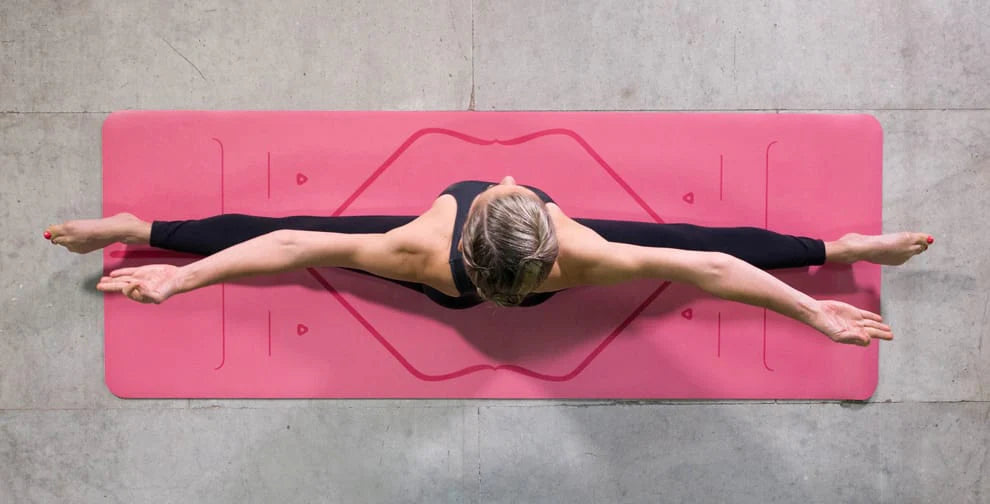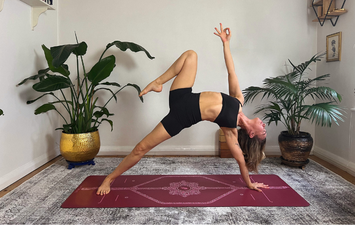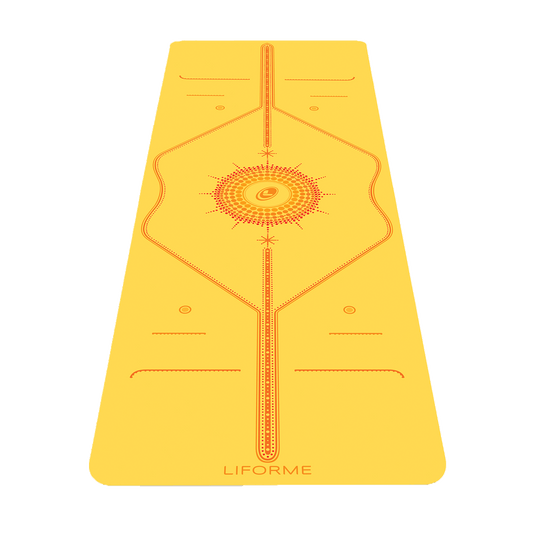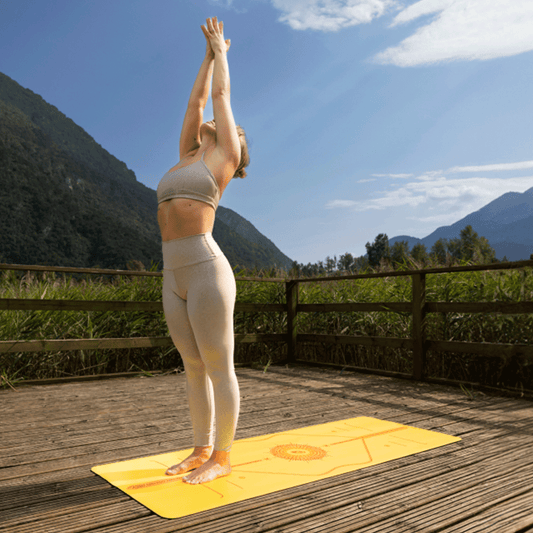In the physical practice of yoga, we talk a lot about the importance of alignment, which is the ‘best’ possible way to do each pose. Best is in inverted commas here because it’s not a value judgment. It’s not about comparing yourself to anyone else or elevating feats of extreme strength or flexibility. Rather, it means doing each and every posture in the way that is best for your body.
Although bodies vary, there are some guidelines we can all follow. If we find these guidelines don’t work for our bodies, then it’s time to try variations or use props that support healthy alignment so we can form good habits and, most importantly, avoid injury. Some types of injuries make themselves very apparent right away, but others occur over time as the effects of practising with incorrect alignment accumulate. We can prevent most of these repetitive injuries by establishing best alignment practices early on.

Instant Feedback
When you start your yoga journey under the guidance of good teachers and attend classes regularly, you get immediate feedback on your alignment. As your body awareness improves, you get better at adjusting your postures to follow the teacher’s demonstrations and verbal cues. Self-correcting is actually quite an advanced yoga skill, but the right tools can make it more accessible to all yogis practising at home.
A yoga mat with alignment guides is one of the most effective ways to improve your home practice. Liforme’s AlignForMe system, a flexible and intuitive guide that is right on the surface of each of our mats, is, in our extremely biased opinion, the best alignment mat out there. Although it has spawned a lot of imitators and outright copy-catters, our original AlignForMe system remains the leader of the pack. Here’s why.
Get Centred
Left/right symmetry is the cornerstone of both good alignment and the AlignForMe system. Liforme’s Central Line makes is really easy to see and correct asymmetries in real time, improving your stability and making your poses more balanced. The Central Line is also the key to understanding how to set up your feet in standing poses like Warrior I and Warrior II. Teachers may mention “heel to arch alignment,” for instance, but it often doesn’t make sense until you see the line connecting your front heel to your back arch. The AlignForMe system also includes lines at 90 and 45 degrees to the Central Line, and those angles are often used to place the feet in poses like Triangle and Pyramid.
Alignment is also a crucial component in your developing sense of body awareness, which is one of yoga’s great benefits. Sensing where your body is in space and being able to feel when it’s not aligned strengthens the body-mind connection, which makes you feel more centred and improves well-being.
Flexibility is Key
No, not how open your hamstrings are in a forward fold, we’re talking about the flexibility of your mat alignment guide. Many alignment mats are overly complicated and only work if you place your hands and feet in very specific zones. Liforme’s system was designed to be simple and flexible so that it quickly becomes second nature to use and works for a variety of bodies and practice styles. Our distinctive design was pioneered by Liforme but has, unfortunately (and unethically) been copied by many others.
But while copiers can imitate the visual look of a Liforme mat, the other qualities that make our mats superior have been harder to replicate because they rely on our commitments to innovation, premium materials, and our ethical priorities. We always ensure that our materials are safe for the bodies that are using them, everyone involved on the manufacturing side, and the Earth once they are thrown away. We take responsibility for the entire life cycle of the mat, because that’s how ethical companies do business. The imitators can’t make this claim in good faith.
Get a Grip
Liforme Yoga Mats are made in a way that is totally unique and provides the best grip for your practice. If you are new to yoga, you may not have thought a lot about the importance of grip. It’s one of the biggest issues with the majority of yoga mats, which is why you may have seen other students layering bunchy mat towels on top of their mats. These towels are meant to absorb sweat so that your hands and feet don’t slip out from under you in the middle of a posture. Those extra layers become completely unnecessary when you have a mat that’s been designed expressly to prevent slippage with its innovative construction.
Liforme’s top layer is made of a unique, proprietary eco-polyurethane that can’t be duplicated by any of the imitators. It may sound like a small detail but it has a big impact on your practice. Liforme’s PU makes for an extremely grippy surface, so you won’t slide on your mat even if you get very sweaty. A mat with good grip is an undervalued tool when it comes to alignment. If you’re slipping out of your poses or overcompensating because you’re used to slipping, alignment is compromised.
Home but not Alone
Practising at home has a lot of advantages (you pick the time, place, and style) but it can be tough for beginners to get the feedback they need to establish best alignment practices. A Liforme Yoga Mat with the AlignForMe system helps take away the guesswork, answering the important question, ‘am I doing this right?’ With the support of a mat like that, even new yogis can feel confident in the safety and efficacy of a home practice.








































